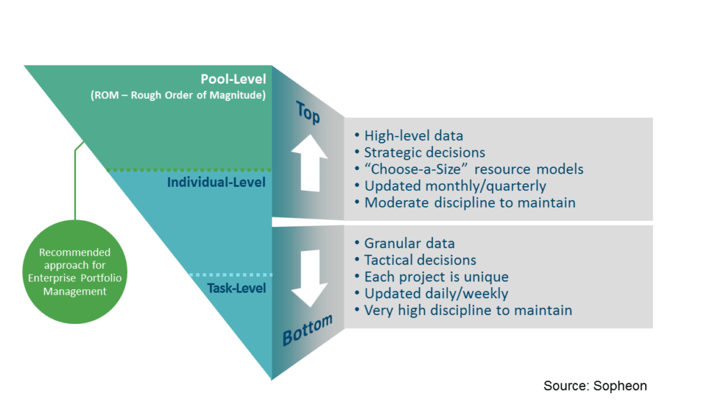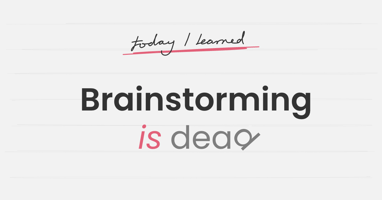This is the final post in a three-part series addressing how consumer firms can leverage a new approach to “Agile” innovation to reduce time from consumer insight to market launch, and create a steadier stream of high-value new products.
In Part One , Dr. Bryan Seyfarth – consumer goods and innovation management guru – describes how the current state of consumer goods innovation compares to Agile principles from the world of software development. In Part Two , Dr. Seyfarth discusses how these principles can be adapted to the unique context of consumer firms, in combination with emerging practices from the world of Product Portfolio Management (PPM).
Agile development in consumer firms differs quite a bit from software development firms. However, there are high-level principles that offer guideposts for consumer goods organizations to improve internal processes and accelerate innovation and new product development (NPD) success. As I outlined in Part One of this series, there are five principles consumer firms can apply to increase agility and fast-track their innovation rate:
- Organize Work in Short Iterative Cycles
- The Whole Team Defines Its Work
- Teams Control Their Time - No Interruptions
- Teams Measure Their Own Performance
- Stay Obsessively Close to the Consumer
We tackled the first two principles in Part Two. In this final post in the series, we'll wrap-up by diving into the remaining three principles.
3. Teams Control Their Time – No Interruptions
In the classic Agile methodology, teams are empowered to define what can fit into a sprint and control their own time, which minimizes interruptions and increases productivity.
For many consumer goods firms, this is a radical principle that dramatically differs from the experience of most innovation teams, largely because of key differences between software development and consumer goods development.
In the software world, determining how much work a small team of programmers can do in a two-week sprint is (relatively) straightforward. Compare this to the development team for a new consumer product — where a typical product innovation team is large, and inherently requires massive cross-functional collaboration — and this often necessitates iterations of longer than two weeks.
Even by broadening the time range of an iteration, it's rare that consumer goods companies practice the type of resource planning that enables a reliable estimate of the time required for its development work in a single iteration. Furthermore, many firms do not prioritize projects, and teams are told to “do it all.”
Unfortunately, this lack of resource planning and inability to prioritize results in low-value projects consistently interrupting work on high-value projects.
To overcome these challenges, consumer goods firms must return to the domain of portfolio management to better prioritize the portfolio of projects within a “waterline” of resource constraints. Many companies we work with are leveraging top-down resource planning to do just this.
Top-down resource planning focuses on the minimum viable set of data required to support prioritization with very little detail to estimate resource needs. This differs from the bottom-up approach, which uses project-planning techniques to create task-based estimates. See the diagram below for a high-level overview, or read our whitepaper “ Integrated Resource Planning: In Support of Portfolio Excellence” to dive deeper. 
Top-down planning offers a framework for decision makers to better position themselves to deliver on growth plans. It is valuable for product development teams because proper resource planning prevents teams from distraction by low-value projects. And in this context, product development teams can define which projects should take up their time during each sprint so they can focus on the highest-value products.
4. Teams Measure Their Own Performance
This leads to the next principle following in the Agile methodology footsteps. After product development teams define their workload, they need to measure their own performance at the end of each sprint and after a product hits the market. This drives new learning and creates real, continuous improvement, allowing teams to pivot their product development course based on fresh insights. Again, this is fundamentally different from how many consumer goods teams currently operate due to the lack of comparative data.
Fortunately, technology is making it easier for teams to measure their effectiveness when new products hit the market. Enterprise innovation management systems are able to help teams automatically compare their forecasts for volume, profit or revenue against actual sales data, identifying red flags or troubling trends before they become real problems. The same technologies can automatically bring visibility to actual process metrics such as time to market, and proactively identify common bottlenecks. This type of transparency and data visibility is imperative for teams to better drive lessons learned during post-sprint and post-launch assessments.
5. Stay Obsessively Close to the Consumer
Finally, teams should stay obsessively close to their consumer. In the software world, they talk about the development team figuratively “reporting directly to the customer” rather than their managers. This also means that customers are actively engaged in providing feedback throughout the entire development cycle, not just at the beginning. This is an area where consumer firms have made huge progress over the years. There is a consistent focus on generating consumer insights from a variety of different consumer research methodologies. For many large development projects, it is typical that products and development are validated in the cycle via consumer trials, home-use tests and similar strategies. By knowing what your customer wants, likes and needs, your team has insights useful for the entire product development process.
In conclusion, there will always be differences between Agile software methodology and Agile practices by consumer firms launching new products. However, there are many high-level lessons that can be adapted and applied to improve the health and value of consumer goods new product development. Just as an elephant can swim, a large enterprise can perform with increased agility to achieve its growth goals and deliver valuable products to demanding consumers.
Getting Started
Interested in a solution that gives your enterprise the data visibility, process automation, resource planning and portfolio management needed to perform with agility in today's turbulent market environment? See why Consumer Good Technology (CGT) magazine's readers have named Sopheon's Accolade Enterprise Innovation Management solution a top tech solution in New Product Development and Introduction (NPDI) for seven consecutive years.




